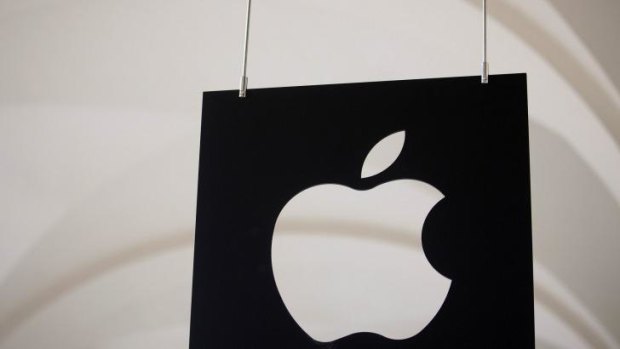With less than a week until the launch of the iPhone 6 the buzz around Apple has reached fever pitch. The pace of traditional and social media traffic around its release is almost congesting the digital superhighway as supporters and detractors trawl through its possible features to determine how it will affect the company's sales revenue and potentially alter the competitive landscape.
Not even this week's celebrity nude photo hacking scandal managed to disrupt the excitement. Indeed it seemed to add to it. The company now confirms the break-ins but says the victims' log-in credentials were the problem (they were too easy to crack) and that the Apple security systems were not at fault.

There is concern Apple has lost its innovative edge and its mega growth profile that was predicated on new cutting-edge initiatives in product design and features.Credit: Bloomberg
So the countdown continues.
The more important and reliable intel on the iPhone 6 is that its functionality will extend to what is being called an iWallet. The new device (to call it a phone seems a little outdated now) is said to include a near field communication chip (NFC) which allows it to act as a contactless payment card.
In other words you can use it as a substitute card for items in much the same way as one uses a Paypass card issued by the banks.
There are devices (like some from Samsung) that already use this technology. Westpac, for example, launched this service with Samsung a few months ago.
The popularity of a payment iPhone is largely dependent on whether the retailers get on board with the technology.
In Australia we are quite advanced in this regard. However in the US the retail industry has been pretty slow to adopt new technology initiatives around retail payments.
But the talk in technology circles is that there are a bunch of retailers on board and in addition agreements have also been secured with Visa, MasterCard and American Express.
The potential for a mobile wallet only adds weight to the importance of an Apple-secure ecosystem. Apple has already introduced fingerprint technology to provide access to its mobile phones. (I use this and it does work).
The bottom line is that the features of the new iPhone and its ability to generate a major boost for the company's revenue is one of the biggest points for debate in investor circles.
There are two schools of thought around Apple. The dominant one is that Apple has lost its innovative edge and its mega growth profile that was predicated on new cutting-edge initiatives in product design and features.
Those who subscribe to this theory take the view that without a new killer device, the company will ultimately lose its market share and relevance and others will fill the innovation space. I think they are missing some of the point.
Apple still holds a lot of marketing cache and its ecosystem of products protects it to some degree from others that bite at its heels or even leapfrog its innovations.
From an investment perspective Apple is clearly a more established company that generates healthy cash flows, holds big cash reserves and trades on a price-earnings multiple that is akin to a more mature business.
In of itself this suggests some investment appeal.
Australian electronics retailers and telco companies are also hanging on whether a new iPhone can stimulate sales.
Retailers like JB Hi Fi derive plenty of their revenue cake's icing from new products such as iPhones. (Investors will remember that some of the recent disappointment in JB's results was due to disappointing tablet sales.)
From the telco perspective I will hand over to Morgan Stanley which has concluded that the release of iPhone 6 will play to Telstra and against its smaller rivals Optus and Vodafone.
Morgan Stanley anticipates the new iPhone will add $500 million in revenues to Telstra. Part of the appeal of the new device will be an (anticipated) larger screen which will directly combat many of its competitors' products and in particular Samsung.
The reasoning behind this analysis is the investment bank's survey that suggests 45 per cent of iPhones are hooked up to Telstra, and the remainder were pretty equally shared between Optus and Vodafone. So Telstra will benefit from this skew.
But there is a caveat - it assumes the pricing status quo between the three players remains neutral.
In recent months it has become pretty clear that the two smaller players are attempting to gain revenue share traction by undercutting voice/data packages.
Telstra still retains the lead in user satisfaction despite the fact that their pricing is recognised as more expensive.
Needless to say marketing departments around the globe - be they telcos' retailers, financial services operators or Apple competitors - will be tuning in on September 9 to see the latest Apple unveiling.
They will be joined by the investment community - all of which will be rating the device and the stock price potential on the back of it.